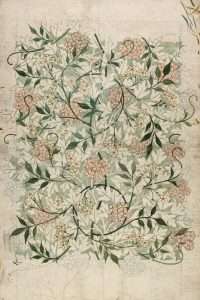Color is a fascinating topic. People, even artists, rarely have a clue how color works. That’s why so many artists, designers and other creative people who think they “know” color are completely wrong.
Treating color like a science, you can use it to draw attention to your goals and win over your audience. You don’t need to be an artist or designer to master these principles of design and make better use of color in your life.
Three part blog about color with examples from art.
Part 1: The first principle of design: Contrast
Part 2: The second principle of design: Harmony
Part 3: The third principle of design: Balance
Each part contains examples from art and practical tips on using the principle in your designs and artwork.
Now that you know the principles of design, how do you apply them?
The first principle is value. Value refers to the lightness or darkness of a color. The second principle is intensity. Intensity refers to how muted or vivid a color appears. The third principle is temperature. Temperature refers to a colors warmth or coolness.
In this second blog post on color, I am going to teach you about value, intensity and temperature so that you can use those principles to master color in art!
Value Value is important for more than just drawing realistic images. Value also helps create mood and atmosphere in an image. There are three categories of value: high, middle and low (see diagram below).
In nature, high value contrasts are usually associated with sunlit surfaces, middle values with shaded areas, and low values with dark shadowed areas. In art, however, there are no rules that dictate which value range should be used for what type of subject matter. For example look at the painting below by Wladyslaw Czachorski of “Dzien Dobry”. This painting has many high value lights and darks but they work very well because the subject matter is appropriate for it!
Glance back at my first blog post
Color is one of the most powerful tools in the artist’s toolbox. It can be used to create mood, set a tone, and deepen the meaning of a piece. It can also be used to take away from a piece by drawing attention to itself. This post will focus on using color in your art to achieve the desired effect.
I have used three principles of design: Contrast, Repetition and Alignment. Each principle will be explained below with examples using color schemes.
Principle One: Contrast
Contrast is using an element that is different than another element. The contrast can be obvious or subtle.
Here are a few examples of contrast:
In this first example on the left, we see two different values of grey being used: a dark grey and a light grey. In this next example on the right, we see two different colors being used: black and blue. Both examples use contrast as a principle of design.
Color Scheme Examples:
In this first example on the left, orange and blue are being used together but there is no contrast because they are both cool colors, therefore they blend together well (cool colors tend to blend well). In this next example on the right, orange and blue are being used together but once again there
First recognize that color is a tool in your artistic arsenal.
Color can be used to enhance the imagery, it can be used to direct the viewer’s attention, or it can be used to communicate emotion or mood. Color can also be used as a device to tell the story of your artwork. But mastering color in art requires an understanding of how colors work together in a piece and how they affect the composition and mood of the piece.
In this three part series, I’d like to break colors down by their role in art: For example, color harmony, analogous colors and contrasting colors.
Color is one of the most important elements in art. It’s been said that color is the first element that captures our attention. Understanding color is vital to any artist, designer or photographer.
I’ve created a series of blog posts which explain how to use color more effectively and consistently. I’ve given examples from artists whose work I admire. There are three principles which guide me when working with color:
1) Isolation
2) Harmony
3) Contrast
I’ll explain each principle in turn, using examples from my own work. I’ll show you how to apply each principle in your own art, and what to avoid. I’ll show you how I use these principles when creating my paintings, and hope that this helps you improve your own process as well.
Color is a important part of art and design. In this blog I will give my thoughts on how to use color in your own work. I will also include some examples or famous paintings with their color palettes so you can see how they used color.
Color is a huge subject. I don’t want this to be the end of your journey on mastering color, but it will be useful to have a solid foundation before you start experimenting further.
Color is used in design for 3 reasons:
1) It represents objects or ideas visually.
2) It creates balance and harmony in a composition.
3) It draws the eye around the image.
I’ll focus on these three things, because that’s what makes my job interesting. One of the first things I ask myself when looking at an image is “what does this color mean?”. Is it warm or cool? Does it represent something literally (like blue for water), or does it have more of an emotional meaning?
What does this color do? Does it draw your eye around the image? If not, why not? How important is it? The answers to these questions are the same for every type of design. For example in advertising, you need to quickly and memorably convey your message while maintaining harmony and balance.
The most important thing to remember when using color is that humans understand color emotionally, not literally. Red doesn’t literally mean “stop” any more than green means “go”. Red means something like “danger”, and green means something


